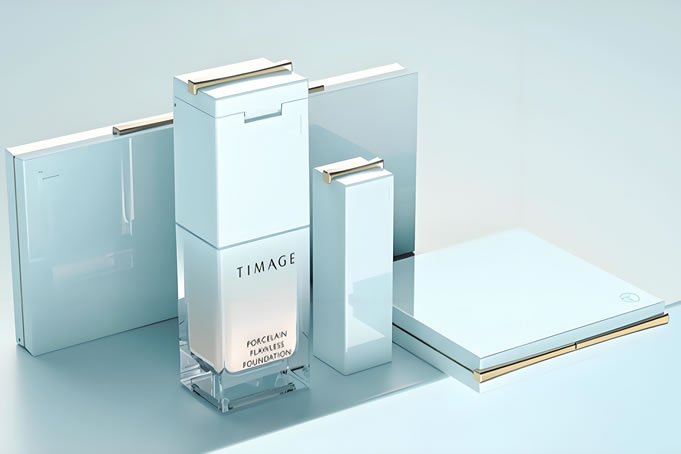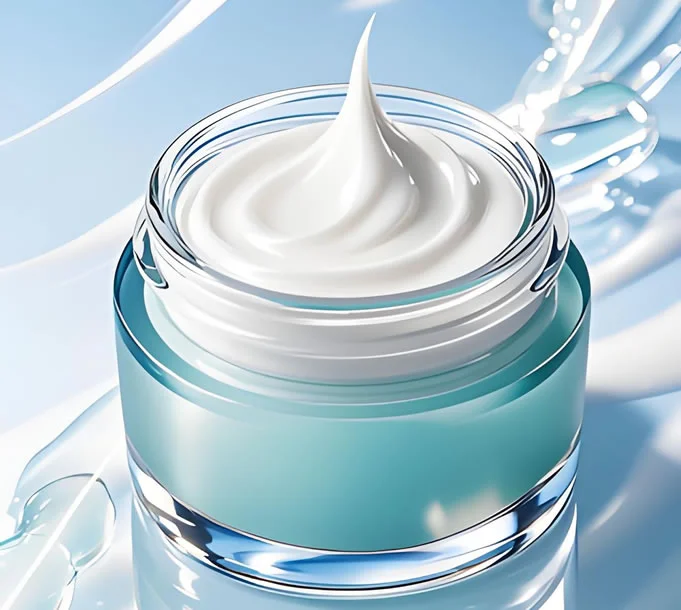
천연 셀룰로오스를 변형한 성분인 하이드록시에틸셀룰로오스는 자극을 유발할 수 있는 일부 화학 성분과 달리 매우 안전하고 피부와 모발에 친화적입니다. 눈에 띄는 특징은 아니지만 이 성분이 없으면 많은 화장품의 질감, 효과 및 사용자 경험이 크게 저하될 수 있습니다.
고품질 하이드 록시 에틸 셀룰로오스
하이드록시에틸 셀룰로오스 (HEC)는 흰색의 섬유질 분말로 나타나는 비이온성 수용성 폴리머로 물과 극성 용매에 쉽게 용해됩니다.
하이드 록시 에틸 셀룰로오스는 농축 효율이 높고 투명도가 좋으며 이온 저항성 (염분, 경수) 및 pH 안정성이 우수합니다. 또한 생체 적합성이 우수하여 샴푸, 샤워 젤, 스킨 로션, 크림, 헤어스프레이 및 기타 제품에 널리 사용됩니다. 일상적인 화학 제품에서 가장 일반적으로 사용되는 셀룰로오스 에테르 중 하나입니다.
화장품의 하이드록시에틸 셀룰로오스
1. 스킨 케어 제품
스킨 케어 제품에서 가장 일반적인 기능은 하이드 록시 에틸 셀룰로오스 는 포뮬러를 걸쭉하게 하고 안정화시키는 역할을 합니다. 예를 들어, 세럼이 물처럼 묽어 얼굴 전체에 흘러내리는 경향이 있다면 HEC를 사용하면 액체를 약간 걸쭉하게 만들어 더 매끄럽게 만들 수 있습니다. 일부 로션은 짜서 바르면 반투명 젤처럼 보이는데, 바르는 순간 물에 녹습니다. 이러한 "수분 부스팅" 효과는 하이드록시에틸셀룰로오스 때문이기도 합니다. 수분과 기타 활성 성분을 가두어 제품이 병에서 분리되는 것을 방지하고 흔들어도 균일한 농도를 유지합니다.

2. 샴푸
하이드록시에틸셀룰로오스는 주로 샴푸와 컨디셔너에 첨가되어 세정감을 개선합니다. 하이드록시에틸셀룰로오스 덕분에 한 번의 펌핑으로 풍성한 거품을 내고, 모발에 미끄러지지 않으며, 헹굼 후 끈적한 잔여물이 남지 않는 풍부한 거품의 샴푸를 만들 수 있습니다. 컨디셔너 역시 부드러운 발림성과 상쾌한 헹굼의 균형을 맞추기 위해 하이드록시에틸셀룰로오스가 필요하며, 특히 무실리콘 제품에서는 이 성분의 실리콘 대체 능력이 매우 중요합니다.
페이셜 마스크
페이셜 마스크는 흘러내림 없이 많은 양의 에센스를 흡수하고 피부에 밀착됩니다. 이 보이지 않는 장벽은 하이드록시에틸셀룰로오스의 역할입니다. 이 성분은 통기성 필름을 형성하여 마스크가 빨리 건조되는 것을 방지하는 동시에 유효 성분이 천천히 침투할 수 있도록 합니다. 일부 수면 마스크는 바르고 나면 보이지 않아 베개에 달라붙지 않습니다. 이는 필름을 형성하는 과정에서 점도가 조절되기 때문입니다.
3. 화장품
화장품에 하이드록시에틸셀룰로오스가 있으면 제품이 더 쉽게 퍼지는 데 도움이 됩니다. 파운데이션은 짜낼 때 부드럽지만 흐르지 않고, 젤 아이라이너 리필은 적당한 탄력을 가지고 있어 바르는 동안 부러지거나 뭉치지 않으며, 립글로스는 입술을 건조하게 만들지 않고 윤기 있는 마무리를 유지합니다. 이러한 성분은 모두 질감을 조절하기 위해 하이드록시에틸셀룰로오스가 필요합니다. 일부 워터프루프 제품은 하이드록시에틸셀룰로오스의 필름 형성 특성을 이용해 메이크업의 지속력을 높여 땀을 흘려도 메이크업이 지워지지 않도록 하기도 합니다.
하이드록시에틸셀룰로오스는 피부에 유해한가요?
민감한 피부를 가진 사람은 스킨케어 제품을 선택할 때 자극적인 성분이 걱정될 수 있지만 하이드록시에틸셀룰로오스는 비교적 순한 첨가제입니다. 전하를 띠지 않고 피부 표면의 단백질과 결합하여 알레르기 반응을 일으키지 않습니다. 수많은 피부 테스트에서 안전성이 입증되었습니다. 하지만 '천연 유기농'이라고 주장하는 일부 제품은 마케팅 목적으로 화학적으로 변형된 성분을 의도적으로 줄여 일관성 없는 결과를 초래할 수 있다는 점에 유의하세요. 따라서 하이드록시에틸셀룰로오스의 존재를 제품 품질의 단순한 지표로 간주해서는 안 되며, 얼마 전에 제가 게시한 또 다른 블로그에서는 HEC의 안전에 대한 토론. 자세히 알아볼 수 있습니다.

하이드 록시 에틸 셀룰로오스에 대한 오해
많은 사람이 성분 목록에 아래에 나열된 첨가물은 중요하지 않다고 잘못 알고 있습니다. 사실, 0.5%의 하이드 록시 에틸 셀룰로오스 는 앞서 나열된 성분보다 제품의 질감에 더 큰 영향을 미칠 수 있습니다. 예를 들어, 하이드록시에틸셀룰로오스는 특정 토너의 성분 목록에서 다섯 번째로 나타나는 성분으로, 활성 성분의 안정성을 유지하는 데 중요한 역할을 합니다.
또 다른 오해는 걸쭉한 제품에 더 많은 활성 성분이 함유되어 있다는 것입니다. 사실, 과도한 농축제는 오히려 피부 흡수를 방해할 수 있으므로 적당히 사용하는 것이 중요합니다.
화장품 엔지니어는 제형을 만들 때 특정 요구에 따라 하이드록시에틸셀룰로오스의 사용량과 조합을 조정합니다. 상쾌한 여름용 제품에는 저점도 포뮬러를 사용하고, 보습을 위한 겨울용 제품에는 고점도 포뮬러를 선택할 수 있습니다. 때로는 카보머와 같은 다른 콜로이드와 결합하여 pH를 조절하거나 잔탄검과 결합하여 끈적임 효과를 강화하기도 합니다. 이러한 미묘한 조정은 소비자가 병 뚜껑을 열었을 때의 첫인상에 직접적인 영향을 미칩니다.
하이드록시에틸 셀룰로오스 는 농축 효율이 높고 투명도가 좋으며 내이온성(염분, 경수) 및 pH 안정성이 우수합니다. 또한 생체 적합성이 우수하여 샴푸, 샤워 젤, 스킨 로션, 크림, 헤어 스프레이 및 기타 제품에 널리 사용됩니다.
간단히 말해 하이드 록시 에틸 셀룰로오스는 안전하고 피부 친화적인 유기 개질 셀룰로오스입니다. 우수한 농축성과 안정성으로 인해 일상적인 화학 제품 분야에서 중요한 역할을 합니다. Mikem 는 하이드 록시 에틸 셀룰로오스 생산을 전문으로합니다. 이 제품은 투명도가 높고 농축 효과가 우수하여 고객의 요구를 완벽하게 충족합니다.





댓글 남기기